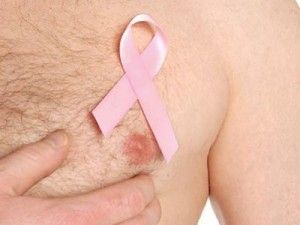

It’s a little known fact that men can get breast cancer. But it happens. There are close to 2,000 new cases of breast cancer per year in men. That’s a small number relative to the hundreds of thousands of women each year who are diagnosed with the disease. But it does happen and it happened to my father.
He had had a sore for a while—a sore that he ignored, expecting it to go away on its own and to heal as sores always had. But it didn’t go away and he ignored it for a while, not wanting to know what it meant because whatever it meant couldn’t be good. That was how he handled anxiety—he avoided it. But eventually he couldn’t ignore it anymore, and that’s when he learned that he had breast cancer.
I can still remember the horror and shock that I experienced hearing the words “breast cancer” associated with my father. The many questions that cropped up—Will he die? How is this possible? Did the doctors make a mistake? What now? And sometime down the line I began to wonder what this meant for me. One in 1,000 men get breast cancer while one in eight women are diagnosed with it. If my father ended up with a cancer that is rare in males and so common in females, how could I possibly beat the odds and not end up with it too?
So last year, at my OB’s urging, I had my first mammogram. I had heard that it was painful and terrifying. I heard that it was like having a brick slammed against your chest and that women dreaded it. So I dreaded it.

But my first mammogram was surprisingly easy. The nurses were supportive and encouraging. They praised me for getting my baseline done in my mid-thirties and for not allowing the negative talk surrounding it to scare me off. It was only mildly uncomfortable (and nothing like the pain of childbirth or even the pain of a sprained ankle). I walked out of the office feeling like a mammogram superhero—daring to get a mammogram where others have failed.
They told me that I would get my results within a week and it seemed that all had gone smoothly…until I got the call that it hadn’t. There was something unclear and they needed to repeat it to determine what it was.
So I went through it a second time. The wait in the waiting room to do the second mammogram seemed like it lasted forever—my anxiety so palpable that I felt ill. That time, the test made me terrified—wondering if the technician was seeing something that was obviously wrong but not telling me about it. The test itself was as easy as it was the first time, although my anxiety about it was far worse. That time they took me to a little waiting area to wait for a doctor to read the results immediately. I sat in that waiting area, watching the Oprah Network and wondering if the women around me felt the same terror that I felt. I wondered why the protocol was different this time—why the need for the immediate test results and whether the difference was that this time something was wrong. But I told myself that it was better to know and do something about it than not to know. I reminded myself that I wished that my dad had faced the fear and had his sore checked out, and I tried to be strong.
Eventually they gave me the news that all was fine and I was glad that I had done it. Glad that I knew where I stood and that I hadn’t procrastinated on scheduling the test. I was glad that my OB cared enough to insist that I get a mammogram. And glad that for the time being, everything looked okay.
‘Tis the season of my annual mammogram and the anxiety is back. But each year I go back because I have to. The alternative is not to know, and that is worse.
As an anxiety researcher and therapist I tell people to face their fears. It is my mantra—the phrase that I say to every client. It is the basis of therapy for anxiety—to face your fears rather than avoiding things. I sit with clients through the terror of facing their fears and wait until their anxiety peaks and eventually passes. I explain to them that the body has a natural shut-off valve that reduces their anxiety if they stay in an anxiety-provoking situation and I wait with them for that shut-off valve to kick in. I coach them to keep facing their fears and we work through each fear on their list one-by-one until their fear is mastered. And I try to live my life by that tenet as well—facing my fears rather than letting them get the best of me. I wonder if my dad had done that—faced his fears and went to the doctor to have his sore examined earlier—maybe he would still be here now.
The reality is that a mammogram isn’t awful. For most women, it isn’t painful. It is not invasive. It’s far easier than childbirth or surgery. It’s quick and easy. The nurses know that you are scared and they do all that they can to make the experience more pleasant. It’s 10 minutes of discomfort versus a lifetime of experiences that could be lost if you avoid it. So it’s well worth the 10 minutes and even the anxiety that I feel each year when I go.
So this year, when I go for my mammogram, I will think of my dad and what was lost; but I will also think of my anxious clients who faced their fears and survived it. I will draw strength from their inspiration and from the women who survived breast cancer and the stress and uncertainty that comes with the diagnosis. I will also think of the women who aren’t facing their fears and are too terrified to get a mammogram and hope that maybe I’ll see them in the waiting room next time.

October is Breast Cancer Awareness Month, and I urge every woman to get an annual mammogram and every man to see a doctor if they notice anything unusual.
For information about breast cancer:
Information about mammograms:
http://www.cancer.gov/cancertopics/factsheet/detection/mammograms
Step-by-step video of a mammogram:
http://www.youtube.com/watch?v=vRlOOTkz9jc
Copyright Amy Przeworski
Follow me on Twitter @AmyPrzeworski https://twitter.com/AmyPrzeworski
Like my Facebook page: https://www.facebook.com/DrAmyP



